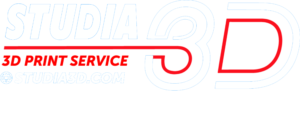Introduction
Studia3D Aggregator for Business is a software package that allows you to receive orders in automatic mode.
- Calculation of the cost of 3D printing
- Removing errors in 3D models
- Placing an order for 3D printing
- Payment for the order by bank cards or invoice for payment
- Distribution of orders between production bases
- Multilingual support
- Support for functionality in the mobile application
The working versions of the system can be found at the links:
- Project page
- Cost calculation
- Development page
- Full description of the system
- Package comparison
- Standard Package
- VIP package
- VIP + mobile package
Installation
To install, you need a subdomain of your site. The connection is carried out by transferring the DNS of your hosting. During installation, the design is adjusted in accordance with the corporate identity of your company. The installation configures payment systems for your bank account.
Frequently asked Questions
Frequently Asked Questions PageLicense
The web interface is open source and licensed under the GPL. The server side is closed source.
Configuration
The system can operate in three modes:
1. Calculate the cost and add to cart
2. Calculate the estimated cost to receive a commercial offer
3. Send the model for calculation of cost to the operator
All the tools you need to set up pricing are inside the plugin. For sample use DEMO.
3D Model Viewer
Contains all parameters related to the web interface for viewing 3D models. If you do not need to display printers, materials or coatings in the frontend / shopping cart, you can hide them.
Loading 3D models
You can customize the maximum model size and file extensions that you allow your clients to upload. Supported file formats: .stl, .obj, .stp, .step, .igs, .iges, texture files for multicolor printing!
Update and support
Updating the system to receive new features to improve performance and security is only possible if you pay for service in accordance with the tariffs. We will customize the plugin for you. We will integrate the system into your business.
Processing 3D models
For 3D printing models must meet the requirements. Several methods are integrated into our system
Treatment of the model through slick3r api
Treatment of the model through the MakePrintable API
Treatment of the model through Studia3D API
Model processing by means of Cura API
APIs are required to activate special functions of the plugin: calculation of filling, calculation of auxiliary materials, calculation of print time. If you enable the API, the models uploaded by your clients will be sent to our servers for analysis and caching within 2 days.
Attributes
Upon activation, the system creates special product attributes (Material, Printer, Coating, Model, Filename, Padding, Scale, Unit).
Material
Material is the first thing a client chooses in the front-end. The most common setup is to create a bunch of materials and clone them, giving each a different color. However, you can create a separate material for each material type and use the coatings as colors. Note that if you have assigned materials to the appropriate printers, a compatible printer will be selected automatically. Therefore, using printers as quality presets, you can combine material and quality presets.
Important settings: Type of material, Density of material (required to calculate the weight of the model).
3D printers
Printers can play several roles: physical devices, printing technology indicators, quality presets.
Physical devices.
The easiest way to use.
Indicators of printing technology.
You can create multiple printers and name them "FFF, SLA, Metal Printing" and use the materials to calculate the price.
Quality presets.
You can create a printer and clone it multiple times to offer different quality presets. Each printer can have different quality settings (layer height, infill, etc.).
It is worth noting that each printer has a Materials drop-down list, so you can assign materials to the respective printers. By default, the Materials drop-down list is empty, which means the printer is compatible with ALL materials. When any material is selected on the external interface, a compatible printer is automatically selected.
The most important settings are: printer type, length / width / height of the working tray, minimum side of the model, layer height, infill.
Coating
The coatings can be used for painting, sanding, polishing, sanding with acetone. Material colors may also work depending on the setting.
All coatings have a Materials drop-down menu where you can assign the appropriate materials. By default, the material dropdown is empty, which means the coating is compatible with ALL materials.
If your coverages are optional, you can set the first coverage to None. To remove the color from the coating, click clear.
Payment is possible for: cm2 of area, fixed price, +% to the total cost.
API
Studia3D Aggregator performs a number of server side operations such as: model recovery, optimization, triangulation, transformation, analysis / slicing. 3D models are uploaded to our server and cached for 2 days. We do not review, copy or distribute the downloaded files. However, these operations are optional and a completely isolated system can be created so 3D models never leave your website. The diagrams below describe the workflow in more detail.
Add to cart mode (API subscription enabled, server side operations enabled)
Get Quote Mode (API Subscription Enabled, Server Side Operations Enabled)
Add to cart mode (API subscription disabled, server side operations disabled)
Get quote mode (API subscription disabled, server side operations disabled)

